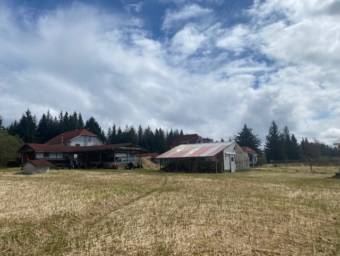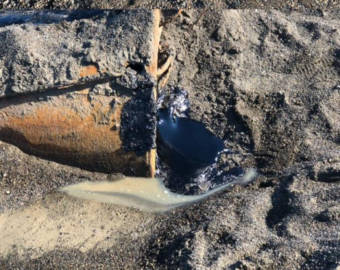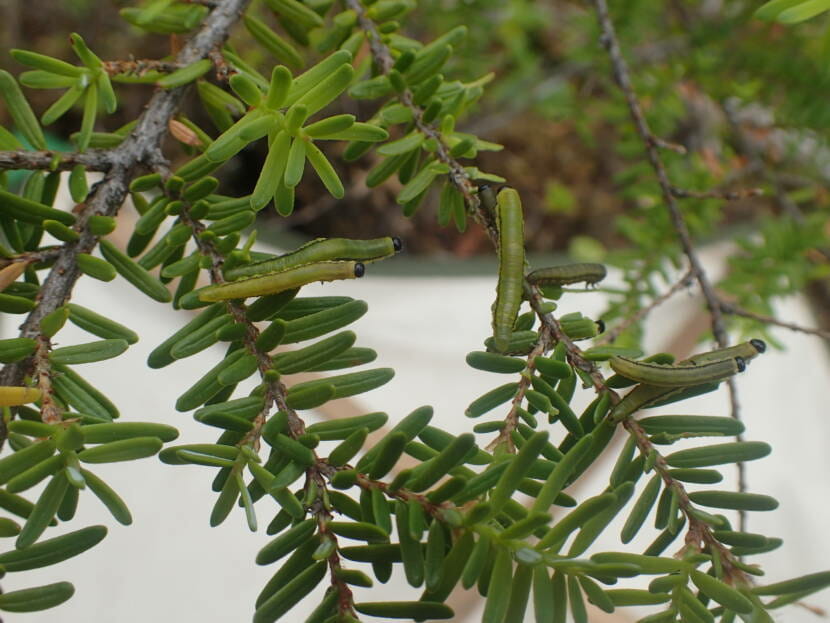
Elizabeth Graham pulls off the road about 25 miles north of downtown Juneau to stand in the rain looking at partially dead trees.
“There’s probably you know, in this little stand right here, about 30 dead tops that I can see just on this little hillside,” she said.
Graham is an entomologist with the National Forest Service. She points out some peaked looking hemlocks.
“And that’s a good example of what we’re seeing in other places. Not every tree affected. But, you know, a small portion,” Graham said.
Dead crowns in the canopy and rusty-colored branches are woven in with the otherwise healthy, green temperate rainforest. About a third of the trees around here were hit by the voracious sawfly. The larvae get mistaken for caterpillars. Adults are a kind of non-stinging wasp, a little smaller than a pinky finger.
In 2018 and 2019, drought conditions allowed the hemlock sawfly to thrive in Southeast Alaska. Now they are mostly done eating the needles off of hemlock trees, but the damage from their 2-year feast is still apparent.
“When I was doing these stories two years ago, I told everyone, ‘Oh, none of the trees are gonna die. You know, it’s just a defoliator, it’s not gonna kill the trees,” Graham said.
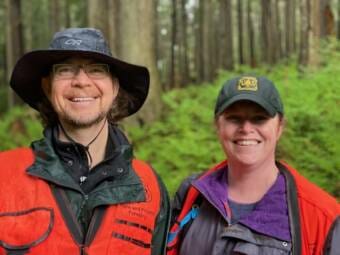
Some trees are gonna die. They lost a lot more needles than she thought they would. But Graham says sawflies are nothing like spruce beetle, a really lethal pest if you’re a tree.
“It’s not going to be that bad, but it made me a liar. And we have a few that aren’t going to make it so I apologize for that,” Graham said.
Bare, sad looking hemlocks are going to stick out a bit in Juneau, Western Admiralty, Northern Prince of Wales and Mitkoff and Kupreanof islands. But the Forest Service isn’t taking any action beyond monitoring because the ecosystem is sorting things out on its own.
Sawfly isn’t an invasive species. Its larvae slowed down naturally because rain came back to the region after two years of drought conditions. The rain brought a fungus that infects the sawfly and controls the population.
But Graham says, it’s still a big deal. This is the biggest sawfly outbreak on record since the 1950s.
“When we saw this outbreak, and I saw it from the plane in 2019, the only way I can describe it is impressive,” she said.
When the Forest Service began to track the sawfly feeding frenzy they observed about 50,000 acres of the Tongass National Forest were affected. A year later, aerial surveys showed that the number had ballooned to half a million acres.
“The thing that I keep repeating to remember is, you know, that it is a natural part of our ecosystem. And, you know, we’re hoping that the impacts will be minimal,” Graham said.
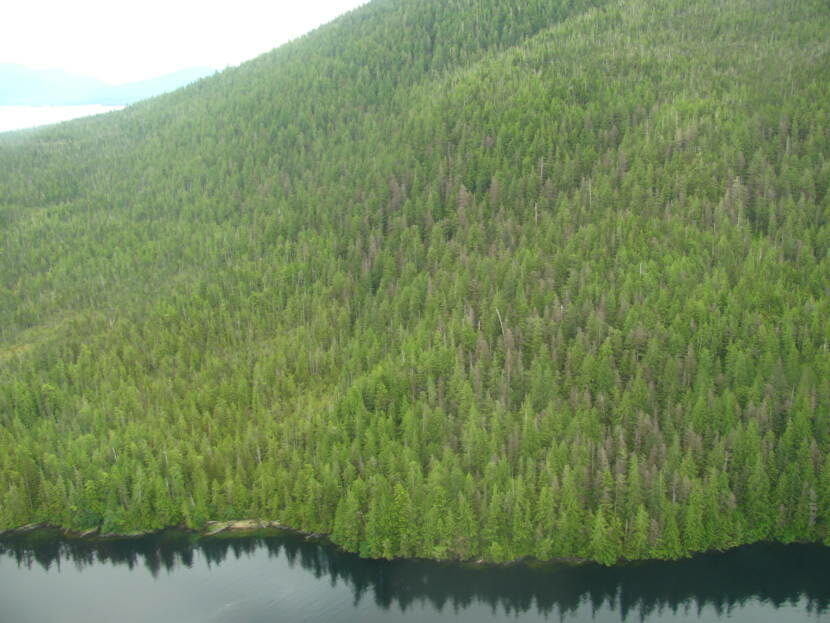
Scientists are tracking the damage. They want to know the extent of the forest affected and how many trees don’t pull through. Scientists spent last year monitoring the outbreak via satellite since COVID-19 meant they couldn’t get in small planes together for aerial surveys.
There are drawbacks to monitoring a tiny insect from space, but the images did give scientists a sense of where to look when they’re back in the air this summer. They’re hoping there won’t be much new activity to see.

